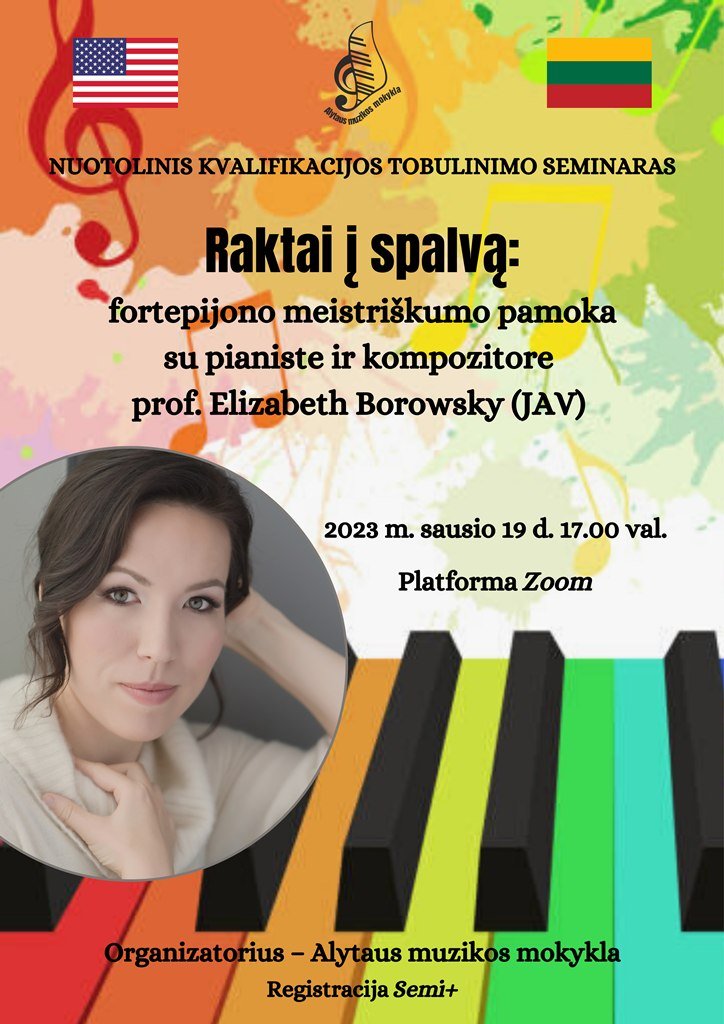
Elizabeth Borowsky Writes
Inhale Life, Exhale Music
2>1 (Pianos)
… When I first opened my own private studio, I was simply happy to have a piano and a teaching space, and didn't really have plans for an additional piano. But, twelve years ago, when I was invited to perform Mozart's Concerto No. 10 (for 2 Pianos) with one of my teen students, I needed a second piano and decided to add it to my studio. …
As a child, I took lessons with a wonderful pianist who had a home studio with two grand pianos.
I didn't realize what a luxury this was, or what a financial commitment my teacher must have made to make this possible, but I certainly reaped the benefits of this setup. From her doubling my part to reinforce my timing or phrasing, to her playing the orchestra part of concertos, this early collaborative experience of sorts certainly influenced me.
When I first opened my own private studio, I was simply happy to have a piano and a teaching space, and didn't really have plans for an additional piano. But, twelve years ago, when I was invited to perform Mozart's Concerto No. 10 (for 2 Pianos) with one of my teen students, I needed a second piano and decided to add it to my studio.
Although I hadn't previously felt like I needed a second piano, once I had it I started using it and little by little it became an essential part of the lesson experience. From efficient back-and-forth without having the student scoot over/stand up, to ear-training (e.g. call and response), semi-private lessons (one student per piano), and challenging students to make appropriate adjustments between two very different instruments (thus simulating the challenge we have every time we play an instrument new to us!), it has been put to use each and every day.
Some years ago a friend gave me a copy of Edvard Grieg's take on Mozart's Sonata K545. I had it in my library for over a decade before I gave it a try, and when I played it with a student, I was shocked! HOW COOL to see what new life he added to this piece "just" by adding on a second piano part! (In the spirit of the Bach-Gounod "Ave Maria").
This gave me the courage to start "duetifying" the music of my students!
For elementary students, it's a sneaky way of getting them to put in a few repetitions, while we dig into alignment, dynamics, articulations, and character. I may offer up that I'll improvise three different accompaniment styles, and they have to tell me what I changed and which they liked best (e.g. playing my part high, low, legato, staccato, with a variety of beat subdivisions or accompaniment patterns, changes of harmony). We work on the skill of playing together (e.g. breathing and moving to help us start together). And sometimes, this is just a "prize" after having learned a piece really well ("let's duetify it and record it for your Mom!")
Although this is something I do most for elementary/intermediate students, even with advanced students, it has proven useful - as it encourages students to hear their music in a new light and context. I can gently shape their timing, tone, and phrasing in a way that is often far more efficient than talking about it. Once they feel it, they hear it, and once they hear it they are able to understand it and implement it into their solo performance.
I do realize that having two instruments is a luxury, and I'm grateful to be able to have this in my studio. In my case, I have a grand and an upright. An electric piano as a second instrument would prove very useful as well (in some ways, I could see it offering up even more creative exercises!).
Over & out!
Masterclass & Workshop for Lithuanian Pianists
Thank you to the wonderful Alytus School of Music (Lithuania) for the wonderful opportunity to provide a workshop for over 50 teachers around the country, and work with three very talented young pianists!
Check out this wonderful write-up …
Thank you to the wonderful Alytus School of Music (Lithuania) for the wonderful opportunity to provide a workshop for over 50 teachers around the country, and work with three very talented young pianists!
Check out this wonderful write-up (note: Google will translate it to English, or your language of choice): https://www.alytus.lt/lt/naujienos/alytaus-muzikos-mokykla-nutiese-tiltus-uz-atlanto-vandenyno




